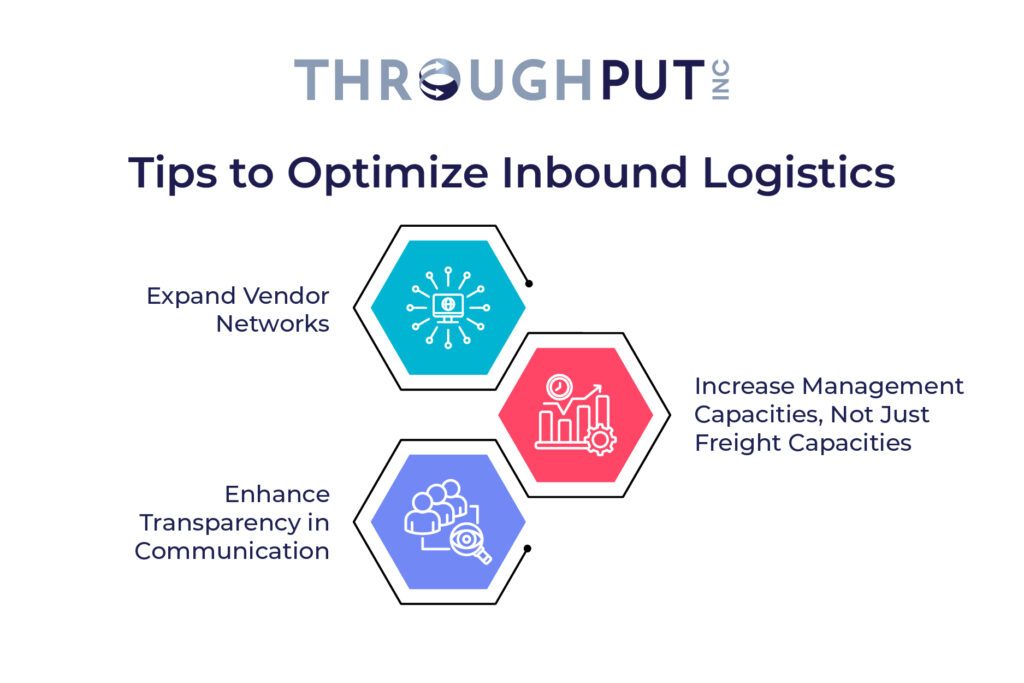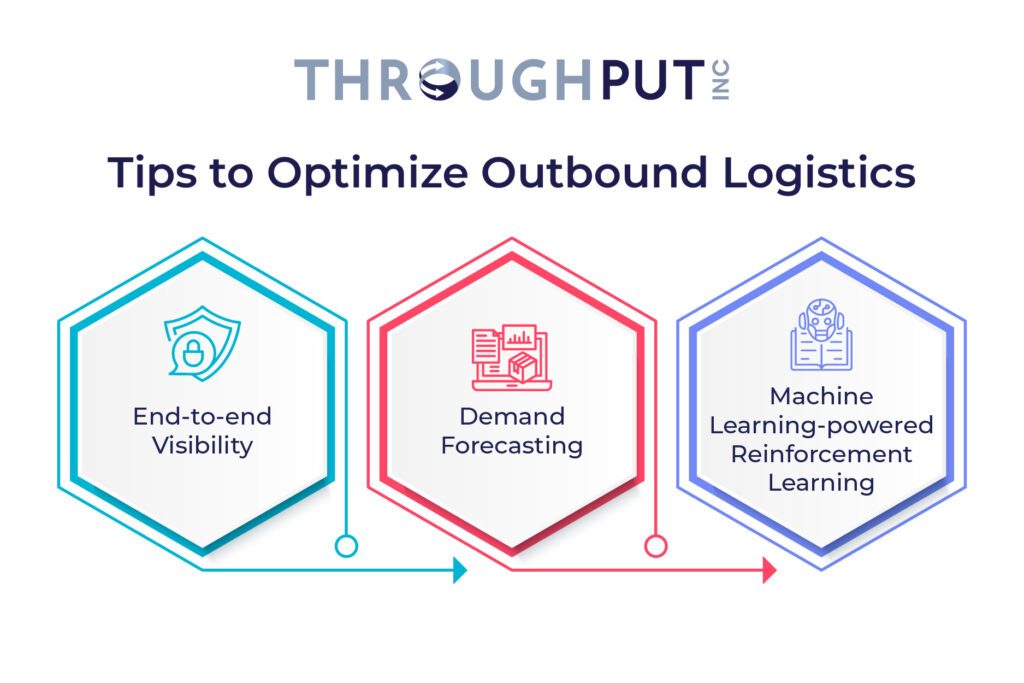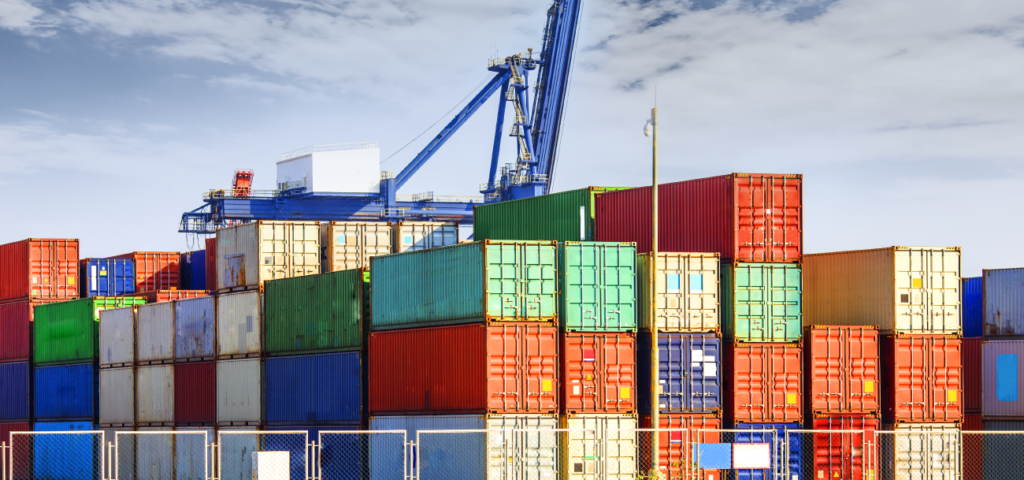The economic disruption due to the pandemic highlighted pre-existing loopholes in global supply chains. Lack of digital connectivity made it hard to tie together global operations for supply chains, including inbound and outbound logistics.
In the wake of Covid-19, supply chain managers are updating their supply chain operations to cater to elevated demand, availability of global vendors, and updated customer data.
Third-party logistics (3PL) are fulfilling gaps between elevated demand and limited supply while remaining accessible, affordable, and compliant.
Another emerging trend around inbound logistics is the robustness of inbound operations in the face of global fluctuations in the economy, capacity, and delivery times.
For outbound supply chain operations, this trend focuses on lean outbound logistics by eliminating bottlenecks and assisting in futuristic supply chain planning for demand and capacity.
To ensure robustness for inbound operations, it is essential to optimize logistics for viability and transparency. Digital connectivity has enhanced supply chain logistics and the following section covers integral tips to optimize inbound logistics.
3 Tips to Optimize Inbound Logistics for Better Visibility and Transparency
Digital connectivity greatly enhances the opportunities in inbound supply chain logistics. Strategies to enhance inbound logistics are:

1. Expand Vendor Networks
As global connectivity continues to grow, the need for specialized products and services also becomes global. Vendors across the globe become available to supply raw materials, resources, and expertise.
Partnering with global vendors enhances the inbound viability by creating a more robust network for gathering resources.
2. Increase Management Capacities, Not Just Freight Capacities
While freight is essentially synonymous with logistics, it is not the only crucial element in a robust supply chain. An increased management capacity can speed up critical operations by creating effective processes.
Receipts can be digitally monitored and passed on to the outbound stage without human intervention. This management intervention can enhance efficiency multifold.
Similar interventions at different inbound stages such as load arrival, warehouse operations, and inventory can enhance productivity, and lead to shorter delivery times.
3. Enhance Transparency in Communication
Transparency in communication can cut down lags, misrepresentation of information, and incorrect order placement. Substantiating communication with AI-powered logistics engines can establish a two-step authentication for inbound logistics.
Step 1- Automated communication of receipts, barcodes, and stock-keeping units (SKUs).
Step 2- Manual communication regarding essential elements of transportation routes and load arrival times.
This setup utilizes both automated and human capacities, enhancing the robustness of inbound supply chain logistics.
Having covered the essentials of optimizing inbound operations, the next step is to optimize outbound operations. As outlined in supply chain trends, the way forward for outbound logistics is to strive for lean operations.
In the next section, we focus on the tips to optimize outbound logistics to ensure visibility and profitability.

3 Tips to Optimize Outbound Logistics to Improve Visibility & Profitability

1. End-to-end Visibility
Although they have different functional parameters, inbound and outbound logistics are part of the same supply chain. Efficient inbound logistics will inevitably lead to efficient outbound logistics.
Enhanced visibility throughout the supply chain can make outbound logistics seamless and optimized. Enhancing visibility can highlight bottlenecks, weak links, and resource-draining elements of the supply chain, making it easy to upgrade and mitigate them.
2. Demand Forecasting
Demand forecasting in logistics can project demand ahead of time and meet it when it emerges. Drawing up demand forecasting analytics in the outbound process leads to a blueprint for adding capacity, time, or management buffers for higher demand.
Whereas, with projections of low demand, demand forecasting can eliminate waste, cut down on transportation, employ an informed replenishment plan and create a lean outbound process.
3. Machine Learning-powered Reinforcement Learning
Machine learning in outbound logistics can recognize patterns of demand across parameters of seasonal change, economic fluctuations, and global trends. Machine learning can then factor in the input from this data to make specific future predictions, enabling targeted outbound shipment fulfillment.
This method of learning from data is machine learning’s core competence, and can greatly advance supply chain efficiency and specificity in outbound logistics.

Drive Efficient Order Fulfillment with Real-time Smart Analytics for Inbound And Outbound Logistics
Robust inbound logistics require the intervention of Artificial Intelligence (AI) to identify gaps, opportunities, and threats. With AI-powered warehouse inventory software, it becomes effortless to accomplish this because AI tools use existing data to conduct analysis.
A real-time supply chain analytics tool can continue to function in the background while the front-end logistics are handled by supply chain managers, leading to effective management, and higher transparency.
Lean outbound logistics are a function of visibility, forecasting, and planning. AI-powered warehouse inventory software can identify the need for enhanced transportation operations, elevated demand, and prospective bottlenecks.
These challenges can then be overcome by incorporating management software and technological partnerships.
Strategic Order Fulfillment with AI-powered Warehouse Inventory Software
Strategic operations can optimize inventory, cut down storage space and help you index your warehouse spacing more effectively. Supply chains enabled with AI-powered engines achieve this effectively and efficiently.
ThroughPut’s AI Suite strengthens global supply chains with AI-powered analytics, forecasting, and real-time information sharing. Inbound and outbound logistics are conducive to AI intervention and can benefit greatly from the advanced capabilities of ThroughPut’s AI suite.
To understand its functioning for your supply chain, book a demo today.


